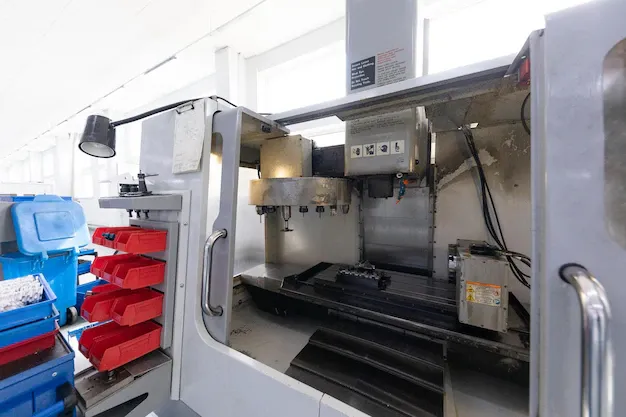Unlock your product's potential with our One-stop solutions!
+86-755-83222882

GET QUOTE
What are the Different Types of Molds Used in Injection Molding?
Different injection molds vary based on distinct attributes. Selecting the appropriate plastic injection mold type for your project is vital. The chosen mold significantly influences production speed, overall costs, and the quality of the final products.
The different types of molds are classified under four main categories:
Based on Feeding System
Hot Runner Injection Mold
The hot runner system employs runners heated internally or externally through coils or rods. These runners are contained within a fixed manifold plate, ensuring they stay in place and do not eject with the part. This design promotes clean, waste-free molded parts, reducing plastic waste and eliminating the need for additional processes to remove or recycle the runners. Additionally, hot runner injection molds typically bypass regrinding or post-processing, resulting in a significantly faster production process. When used with multi-cavity molds, this injection mold tooling proves especially beneficial for handling large volumes of intricate and complex shapes.
Cold Runner Injection Mold
The cold runner system channels melted plastic into the injection molding cavity through unheated runners. In contrast to a hot runner injection mold, the cold runner mold is visible as the operator cuts it into the mold. A new runner system is necessary for each molding cycle. Depending on the mold plate type, the molded part and runner system may be joined or separated upon ejection.
These injection molds are simpler to clean and maintain, facilitating quicker material and color changes. The fast-changing gate and runner positions allow easy incorporation of injection molding design adjustments. Unlike internally heated hot runner molds that face challenges with specific materials, cold runners can accommodate a wide range of materials.
Insulated Runner Molds
These tools resemble the conventional cold runner molds but utilize cartridge heaters or alternative heating methods to generate a protective layer of molten plastic. This process forms insulated "culls," achieving effects akin to hot runner systems.
This approach is favored by manufacturers due to its cost-effectiveness, as it eliminates the need for a temperature controller, making it more affordable than hot runners. Additionally, it facilitates swift material and color changes. Nevertheless, it's essential to note that insulated runner molds may not be compatible with all materials, particularly those demanding engineering-grade plastics.
Based on Mold Plate
Two Plate Injection Mold
This mold type is the most prevalent in its category due to its economical tooling costs. A two-plate injection mold features a single parting line where the core plate and cavity plate converge. In this mold, the gate, runner, and parting line must align. It is adaptable to any runner system but works optimally when paired with single cavity molds.
Three Plate Injection Mold
This mold features an extra plate, known as the stripper plate, creating two parting lines. Positioned between the cavity and core plates, it automatically divides the runner system from the molded part. This accelerates production by eliminating the necessity for manual separation or recycling of the runner system.
Stack Injection Mold
A stacked mold consists of multiple parallel mold plates, typically arranged in two, three, or four levels for enhanced efficiency. While the initial cost of constructing a stacked mold is higher due to its lengthier building process, it offers the advantage of requiring less clamp tonnage per cycle. This reduction in clamp tonnage leads to lower operating costs. Additionally, stacked molds can be designed to accommodate various materials simultaneously.
Based on the Number of Cavities
Single Cavity Injection Mold
Molds with a single cavity yield one part with each injection cycle. Despite being a slower method, the tooling costs for this type are less compared to alternatives. Due to its affordability, low-volume productions are often preferred. Additionally, using multiple single cavity tools provides better control, ensuring uninterrupted production even if one mold encounters issues.
Multi Cavity Injection Mold
A multi-cavity mold is designed to produce numerous identical parts in a single injection cycle. While the initial cost for tooling is generally higher compared to single-cavity molds, it proves more economical for large-scale productions. This is due to its ability to generate multiple components simultaneously, resulting in higher production speed and lower per-unit part costs.
Family Injection Mold
Family molds, similar to multi-cavity molds, consist of multiple cavities, but their optimal use lies in producing several parts within a single cycle. For example, manufacturers can employ a family mold to create both right and left component iterations simultaneously. In contrast, a basic multi-cavity mold can only yield one iteration per cycle.
Despite the higher cost of a family injection mold, it tends to lower overall production expenses. This is because a single family mold proves valuable for various components, saving considerable time and operational costs. However, it's crucial to note that these plastic injection mold types are suitable only for components of the same material and color. For parts requiring different materials or color variations, separate molds are necessary.
Based on Unscrewing Injection Mold
These molds stand out as the top choice for crafting threaded holes in plastic parts. They operate automatically, driven by a combination of:
Rack and pinion
Electric motors
Hydraulic motors
Unscrewing injection mold
This innovative mold employs its rotating drive system to fashion threaded components like bottle caps, nuts and bolts, automotive parts, shampoo bottles, and cosmetic packaging. These components, often challenging to extract with standard knock-off methods due to their lack of draft angles, benefit from the unscrewing injection mold.
This specialized mold facilitates removal without harming the intricate threads. The inclusion of undercut injection molding is pivotal, enabling the release of intricate parts without damage. Operating at high speeds, it minimizes cycle times, ensuring efficient high-volume production.
Conclusion
Injection molding stands out as a highly effective manufacturing method with diverse applications. The outcome of the manufacturing process hinges on the choice of the mold. In this article, we delve into various types of injection molds, considering features like the feeding system, number of cavities, and mold plate. Armed with this knowledge, you'll be well-equipped to make informed decisions for your upcoming projects.
Crafting injection mold tooling is a nuanced and skill-demanding endeavor, requiring expert handling and precise process control. It's crucial to collaborate with a trusted partner for top-notch injection molding services. For reliable and cost-effective production of high-quality plastic parts, reach out to RapidDirect today. Your projects deserve nothing less.


